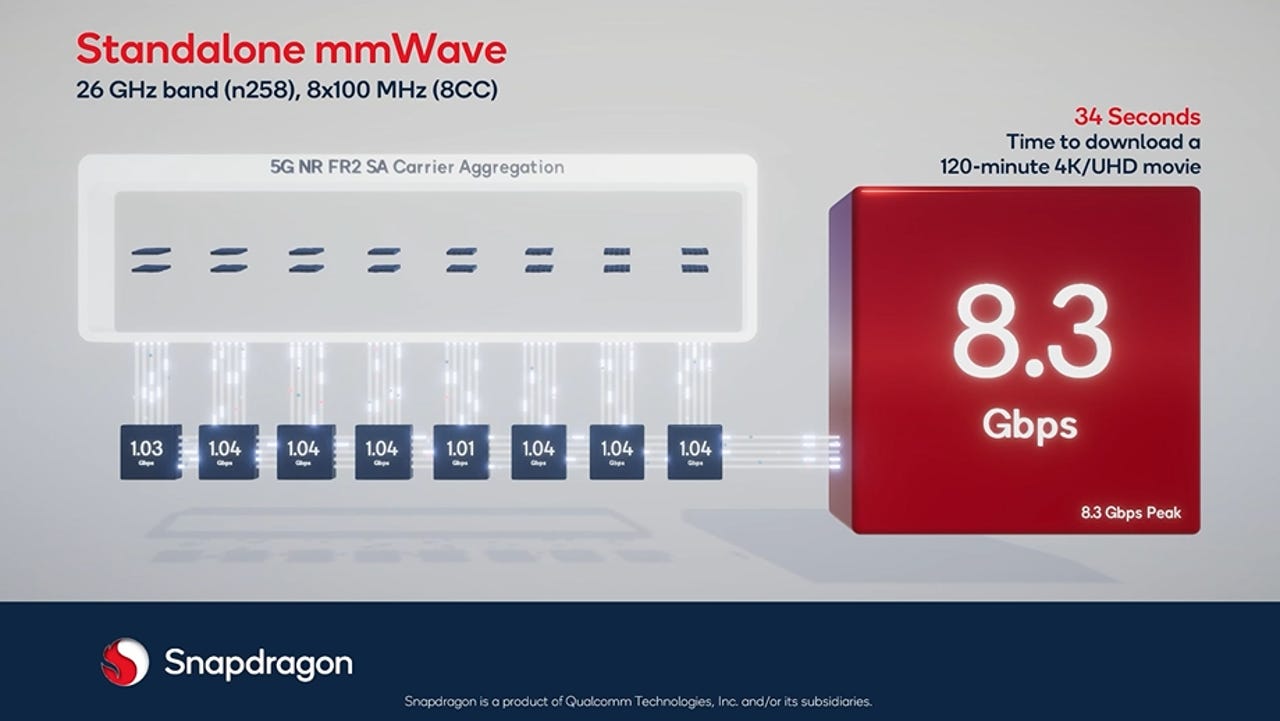Qualcomm ditches sub-6GHz 5G connection to hit 8.3Gbps peak using mmWave only


Qualcomm has conducted a 5G lab test that it claims to be the world's first 5G standalone millimetre wave (mmWave) connection, and has hit a peak speed of 8.3Gbps.
Currently in 5G deployments around the world, telcos are using spectrum originally allocated for 4G, also called sub-6GHz, and are starting to throw in some mmWave connectivity.
With the 6GHz anchor, overall speeds cannot match the speeds the 5G hype machine generated.
Doing away with sub-6GHz, Qualcomm has hit 8.3Gbps in a lab where it aggregated eight channels of 100MHz in the 26GHz band using its X70 modem announced earlier this year and currently available as samples to customers.
Qualcomm said not needing sub-6GHz will allow operators to deliver high speeds even if they don't have sub-6GHz spectrum licences, and would be particularly useful in green field deployments to provide connectivity.
At the same time, it also aggregated three TDD channels of 100MHz, 90MHz, and 100MHz in the 2.5GHz and 3.7GHz spectrum bands to hit a peak speed of 6Gbps.
Last week, Qualcomm announced its Networking Pro Series Gen 3 products that use Wi-Fi 7 had begun sampling to partners. In aggregate, the devices can hit 33Gbps of throughput, with point-to-point connections topping out at 10Gbps.
The company said the 320MHz channels used in Wi-Fi 7 will double the throughput compared to Wi-Fi 6.